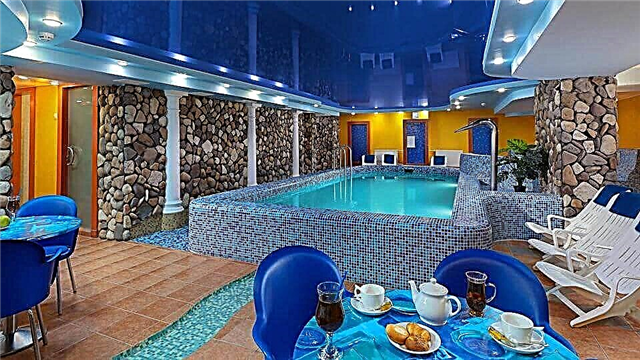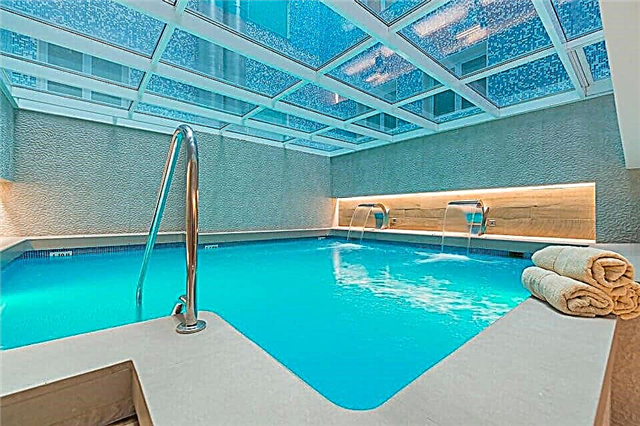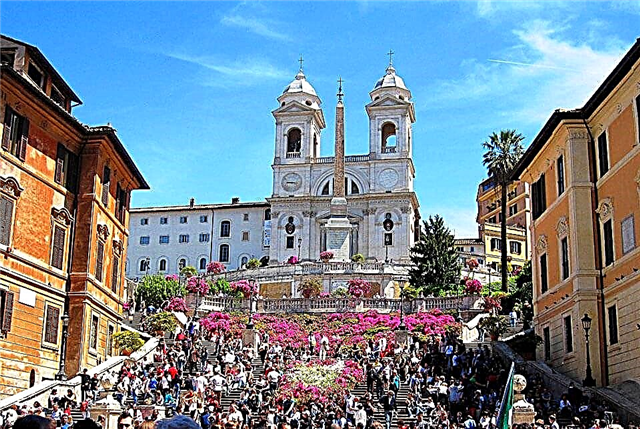Address: Estonia, Tallinn, st. Pikk
Coordinates: 59 ° 26'20.1 "N 24 ° 44'48.2" E
Content:
Short description
Around 1400, an association of singles and foreign merchants was founded in Tallinn, similar to the Great Guild - the Brotherhood of Blackheads.

View of the House of the Brotherhood of Blackheads (center)
Legend attributes its origin to the middle of the 14th century, when a detachment of foreign merchants from Tallinn assisted the Estonians during a peasant uprising in 1343-1345. The peasants set fire to the estates and killed the Danish-German feudal lords, because they tortured and oppressed the indigenous people, using them as cheap labor for their needs. And although the peasant war was suppressed by the combined forces of the Danes and the knights-crusaders, foreign merchants defended Tallinn and subsequently took on the responsibility of protecting the city.
In 1407, the charter of the Brotherhood, better known as "Great Rights", was adopted, according to which foreign merchants provided the city with a cavalry unit.... Members of the Brotherhood kept watch on the watchtowers, and with the closing of the city gates at sunrise, they examined the fortifications, making sure that no enemy scouts were hiding behind the walls. In 1526, the Blackheads handed over 94 guns to the Tallinn city authorities, including 20 cannons on carriages and 8 catapults designed for throwing stones and arrows.

Building entrance
The Brotherhood paid for the manufacture of guns for the city of Narva, but on the condition that the heraldic emblem of the Blackheads would be engraved on each gun. The coat of arms was a shield with the image of the heavenly patron of the Brotherhood - the black Saint Mauritius, who lived in the III century AD, therefore the merchants called themselves "Blackheads". As the leader of the Roman legion recruited in Upper Egypt, Mauritius was supposed to travel from Thebes to Gaul and help Emperor Maximian to pacify the Gentiles. But Mauritius, believing in Christ, refused to persecute Christians, for which he was executed in 290 along with his 6,600 soldiers.
Taking as a model the unparalleled courage of a black fighter, the members of the Brotherhood helped the Estonians to survive in 1557 during the Russian-Livonian War, when the troops of Ivan the Terrible tried unsuccessfully to besiege Tallinn. After Peter I conquered Estonia and annexed it to the Russian Empire in 1710, the Brotherhood of Blackheads gradually lost its military significance. New priorities came to the fore - the protection of merchant interests in trade and the patronage of the arts. In 1895, the Brotherhood became a secular club. In 1940, the authorities of the Estonian SSR liquidated the club, and the Blackheads fled to Germany.

Coat of arms of the Guild of Blackheads on the door to the building
The building of the Brotherhood of Blackheads - a Renaissance monument in Tallinn
The blackheads held their meetings and feasts in the Great Guild, but in 1540 a conflict broke out between the organizations. Blackheads celebrating a wedding at the Guild House were fined for drinking together. The Brotherhood was faced with the question of its own residence. Initially, the Blackheads rented houses on the streets of Vienna and Kullaseppa, and in 1530 they bought the building that belonged to the chairman of the city magistrate Johan Viant and rebuilt it in the Renaissance style. Today this building can be easily found by walking along Pikk Street towards the Sea Gate. On the right side of the street there is a building at number 26 with luxurious sculptural reliefs. The main decoration of the building is the magnificently decorated portal, created in 1597 by the architect and sculptor Arent Passer.
Above the portal, on a stone slab is carved the coat of arms of the Brotherhood - two heraldic lions support a shield with the image of the head of St. Mauritius. The house is crowned with a triangular gable edged with volutes (stone curls).

Head of Saint Mauritius on the coat of arms of the Blackheads Guild
On the gable, under the roof itself, there are two allegorical bas-reliefs symbolizing "Peace" and Justice ", and above all this - the image of Jesus Christ. Between the window openings of the second floor, there are Gothic slabs depicting knights galloping on horses, and on the frieze, between the second and first tiers, there are the coats of arms of the Hanseatic cities, including the heraldic symbol of Russian Novgorod, which was also part of the trade union - Hansa. On the triangular pediments crowning the windows of the first floor, portraits of the Polish monarch Sigismund III and his wife Anna of Austria are carved in stone. Antique furniture and paintings belonging to the Brotherhood of Blackheads can be seen in the Tallinn City Museum.
Bachelor Party of the Brotherhood of Blackheads
Once in the House of the Brotherhood of Blackheads, a drunken bachelor life was seething. In addition to major celebrations, merchants organized so-called pfenning drinking parties every day - they discussed current affairs, played cards, drank beer.

White Hall
The Livonian chronicler Balthazar Russov reports that the Blackheads introduced the custom of putting up a Christmas tree in the Town Hall Square. Young merchants and girls danced around the tree and then set fire to the spruce so that it burned brightly. Only twice a year - during Easter and Christmas festivities - could new members join the Brotherhood. In 1711, Peter I celebrated Christmas in Tallinn, and despite the fact that the Russian tsar was already engaged to Catherine, the Blackheads accepted him into their Brotherhood.











